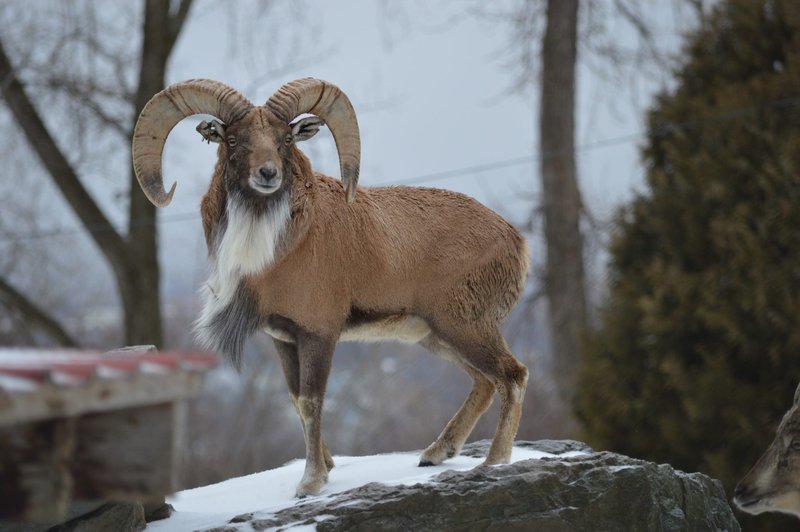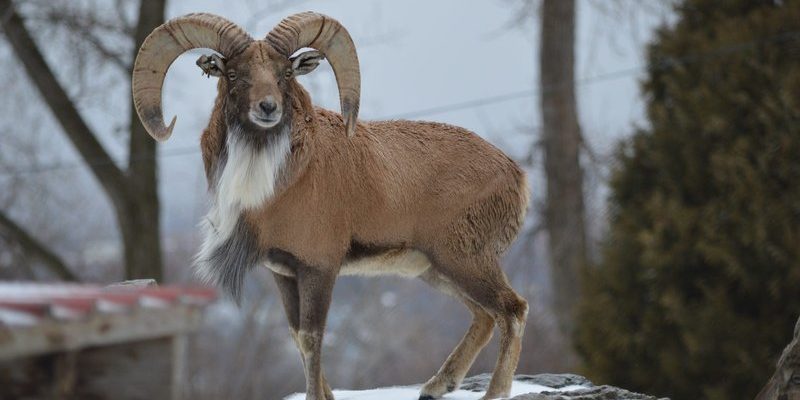
In some ways, the plight of the urial mirrors that of many species on Earth. While the world races towards development and urbanization, these animals are finding their natural habitats shrinking and their lives increasingly threatened. Understanding the urial’s status isn’t just about conservation; it’s about appreciating the delicate balance of ecosystems, the impact of human actions, and the efforts being made to turn the tide. Let’s dive into what makes the urial special, why it’s endangered, and what’s being done globally to ensure its survival.
What Is the Urial?
The urial (Ovis vignei) is a wild sheep known for its striking appearance. With males sporting long, sweeping horns that can grow up to three feet, these animals are both a sight to behold and a testament to nature’s artistry. Urials are typically found in rugged, mountainous regions across countries like Pakistan, India, Afghanistan, and parts of Central Asia. They prefer habitats with open grasslands, scrub forests, and rocky outcrops—ideal settings for grazing and escaping predators.
One of the fascinating aspects of urials is their social structure. They live in groups called “herds,” often led by a dominant male. These herds typically consist of females and their young, while adult males tend to be more solitary or form small bachelor groups. This social dynamic helps them navigate their challenging environment, providing safety in numbers against predators such as wolves and leopards. Honestly, it’s intriguing how these animals have adapted to thrive in a world that often seems against them.
Physical Characteristics
Urials are medium-sized sheep, usually weighing between 80 to 200 pounds, depending on their age and sex. Their thick, reddish-brown coats are particularly well-suited for their harsh, mountainous homes. When winter rolls in, this thick fur provides crucial warmth. You might even catch them shedding this coat in spring, revealing lighter undercoats as they prepare for the warmer months. And let’s not forget those impressive horns! The males use their horns not just for show, but also in battles for dominance, making the competition fierce.
Why Are Urials Endangered?
The main factors leading to the endangerment of the urial are habitat loss, hunting pressures, and climate change. As human populations grow and needs expand, natural habitats are being destroyed. Urbanization, agriculture, and infrastructure developments all contribute to this loss. When their homes shrink, urials face competition for food and water, making survival challenging.
Hunting remains a significant threat, too. Despite laws in place to protect these animals, illegal poaching occurs, driven by the demand for traditional medicine and trophy hunting. It’s quite heartbreaking when you consider that every urial taken from the wild can disrupt the delicate balance of their herd and ecosystem.
Lastly, climate change plays a role in their dwindling numbers. As temperatures rise and weather patterns shift, urials are forced to relocate or adapt quickly—something that not all of them can do. In essence, these beautiful creatures are caught in a web of challenges, and their survival depends on us understanding and acting on these issues.
Global Conservation Efforts
Many organizations are stepping up to help the urial. From governments enforcing stricter wildlife protection laws to local NGOs focusing on community education, the fight for urials is gaining momentum. International bodies like the IUCN (International Union for Conservation of Nature) are also working to monitor and assess the population status of urials. Their efforts aim not just to track the numbers but also to mobilize resources and awareness.
One notable initiative is the establishment of protected areas and wildlife reserves in critical habitats. These reserves serve as sanctuaries, giving urials a safe place to roam, breed, and thrive. By limiting human interference, conservationists hope to create environments where the urial can bounce back from its precarious situation.
Moreover, community-led projects are proving vital. Local communities that rely on the same land have been engaged in conservation efforts, offering incentives for protecting wildlife. Educating communities about the importance of urials helps foster a sense of shared responsibility. Here’s the thing: when locals understand the value of preserving their natural heritage, they’re more likely to become advocates for the animals they share their home with.
Success Stories: Hope for the Urial
Amid the challenges, there are bright sparks of hope. In some regions, conservation efforts have shown promising results. For instance, in parts of Pakistan, protected areas have reported increases in urial populations due to stricter anti-poaching laws and community involvement.
Sustainable tourism is another avenue that has brought attention to urials and their habitats. When nature enthusiasts visit these areas, they contribute to the local economy, which can motivate communities to protect rather than exploit their natural resources. This symbiotic relationship can help create a safe haven for urials and other wildlife.
Moreover, translocation efforts have been implemented in some regions. This involves relocating urials from overpopulated areas to places where they can thrive. While this is not a long-term solution, it does provide immediate relief and can help bolster struggling populations.
The Role of Education and Awareness
Education plays a critical role in conserving the urial. When people understand the importance of preserving wildlife, they often become passionate advocates. Schools, conservation programs, and online platforms are increasingly spreading awareness about the plight of the urial and other endangered species. By teaching young minds about biodiversity and conservation, we’re investing in future generations who can continue these efforts.
Community-based education programs focus on the importance of biodiversity. They teach locals how healthy ecosystems benefit everyone, from providing clean water to supporting livelihoods. Engaging storytelling and workshops encourage participation and empower individuals to take action—whether through reporting illegal poaching or participating in habitat restoration projects.
Additionally, outreach campaigns often utilize social media and other digital platforms to reach broader audiences. These campaigns can showcase the beauty and importance of urials, fostering a global community of supporters who advocate for their protection. Honestly, when people come together to rally for a cause, the impact can be profound.
What’s Next for the Urial?
Looking ahead, the urial faces a challenging road. Continued conservation efforts are essential, but they need sustained support from various sectors, including governments, NGOs, and local communities. Policies promoting habitat protection, anti-poaching measures, and community engagement should be at the forefront of conservation strategies.
It’s also crucial to track climate change’s impact on urials. Researching how shifts in weather patterns affect their habitats can inform future conservation decisions. The more we understand how these changes play out in the wild, the better equipped we’ll be to help urials adapt and thrive.
Advocating for sustainable practices is another avenue that can make a difference. Encouraging eco-friendly tourism, sustainable agriculture, and responsible land use can help minimize human impact on urial habitats.
In conclusion, while the urial may be an underappreciated gem of the animal kingdom, its survival is linked to our choices and actions. By coming together—whether through conservation efforts, education, or sustainable practices—we can pave the way for a brighter future for this incredible species. The journey is far from over, but with collective determination, there’s hope yet for the urial.

